Iwa-enogu (Mineral Pigment)
岩絵具
Iwaenogu
CATEGORIES
Iwa-enogu is Japanese paint made from particles of pulverized rock, mainly minerals. The particles have a similar coarseness to sand and feature a lusterless matt feeling. The paint itself has no adhesive properties, but by adding glue, it sticks to the medium surface.
There is natural iwa-enogu made of natural minerals, contemporary iwa-enogu produced artificially from modern times, and synthetic iwa-enogu. Natural iwa-enogu is paint made by grinding natural minerals. This is rare and only available in a few colors but offers distinctive deep tones. To produce more colors, darker tones can be made by baking and carbonizing the paint. Contemporary iwa-enogu is produced by pulverizing artificial stones made from glass and metal oxides. It is available in many colors, is not prone to discoloration and has excellent durability. Synthetic iwa-enogu is paint made by dyeing powdered crystal or calcite via a special coloring process. It is light-toned paint and also available in neutral and fluorescent colors.
The paint is numbered from 1 to around 13 based on the particle size. The smaller the number, the bigger the particle; the larger the number, the smaller the particle. The finest of these is called “byaku” which means white. This is because the color becomes pale and whitish as the particles become smaller. Iwa-enogu is produced by way of elutriation, utilizing the different sedimentation rates in water based on the weight of the particles. With iwa-enogu, the primary coat tends to show through easily. Therefore, it is best to apply it in several coats, and allow to dry between each coat, to fill in the gaps between the particles. A rich tone can be achieved by laying different colors each time. It is difficult to mix colors evenly due to differences in particle size (to be mixed on the palette before use), but this allows for a mottled expression. When mixing iwa-enogu, stir it carefully so that each droplet is coated entirely in the glue solution. Be careful not to get it wet before mixing with glue as this would lower its adhesive powers. Depending on the type of painting, add an appropriate amount of water. A brush is generally used with this type of paint. Leftover paint can be stored for future use by adding hot water and removing the glue. Iwa-enogu is labeled with its type (natural, contemporary, synthetic), name and number, and sold in 15-gram units. It can be purchased at art stores selling Japanese art supplies.
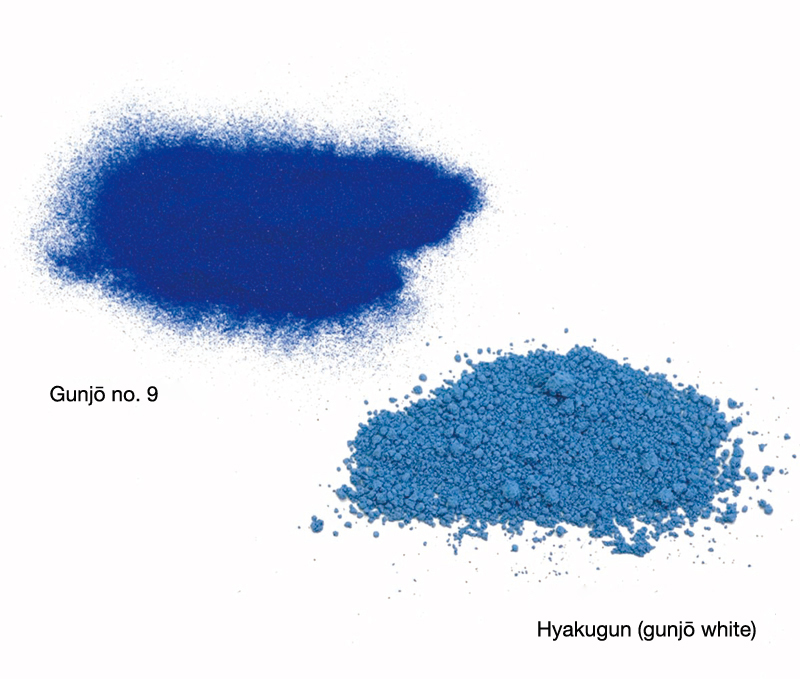
- Natural iwa-enogu (mineral + paint)
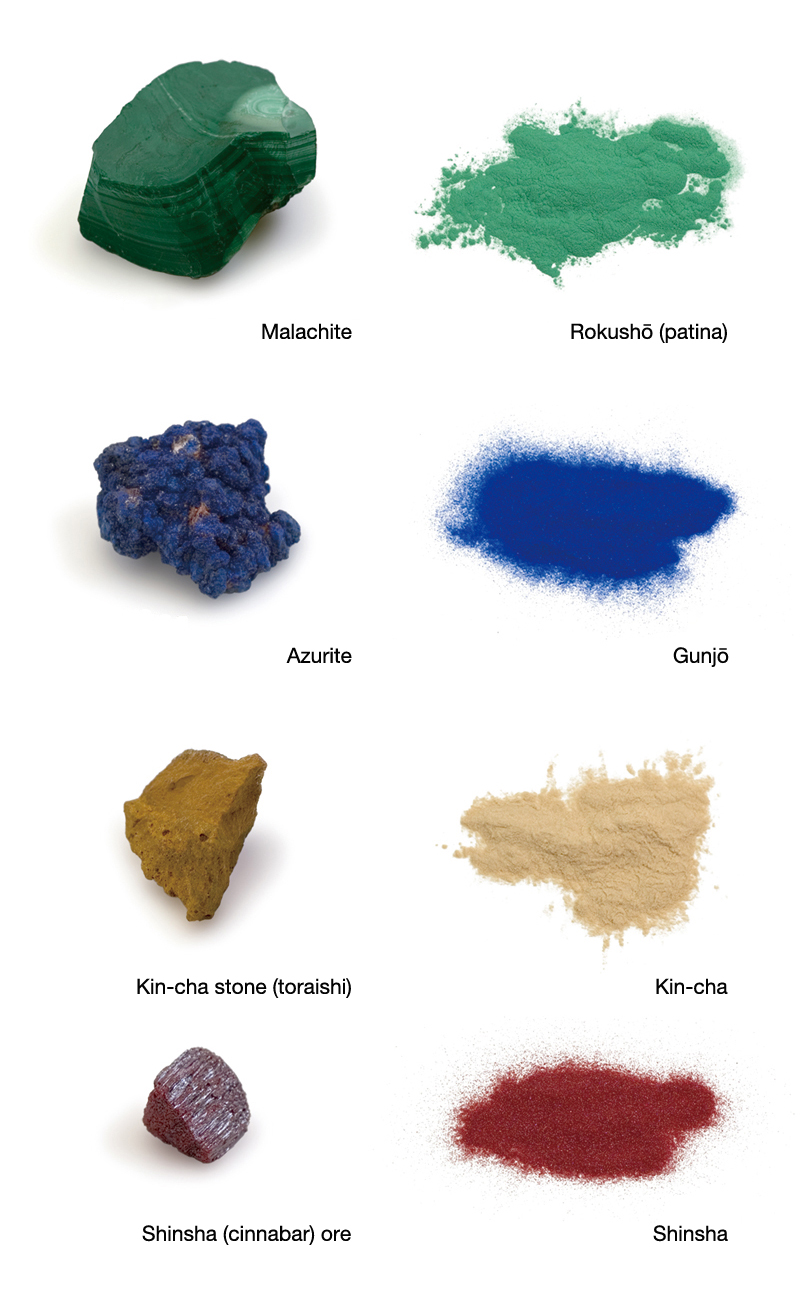
- Contemporary iwa-enogu (materials + paints)
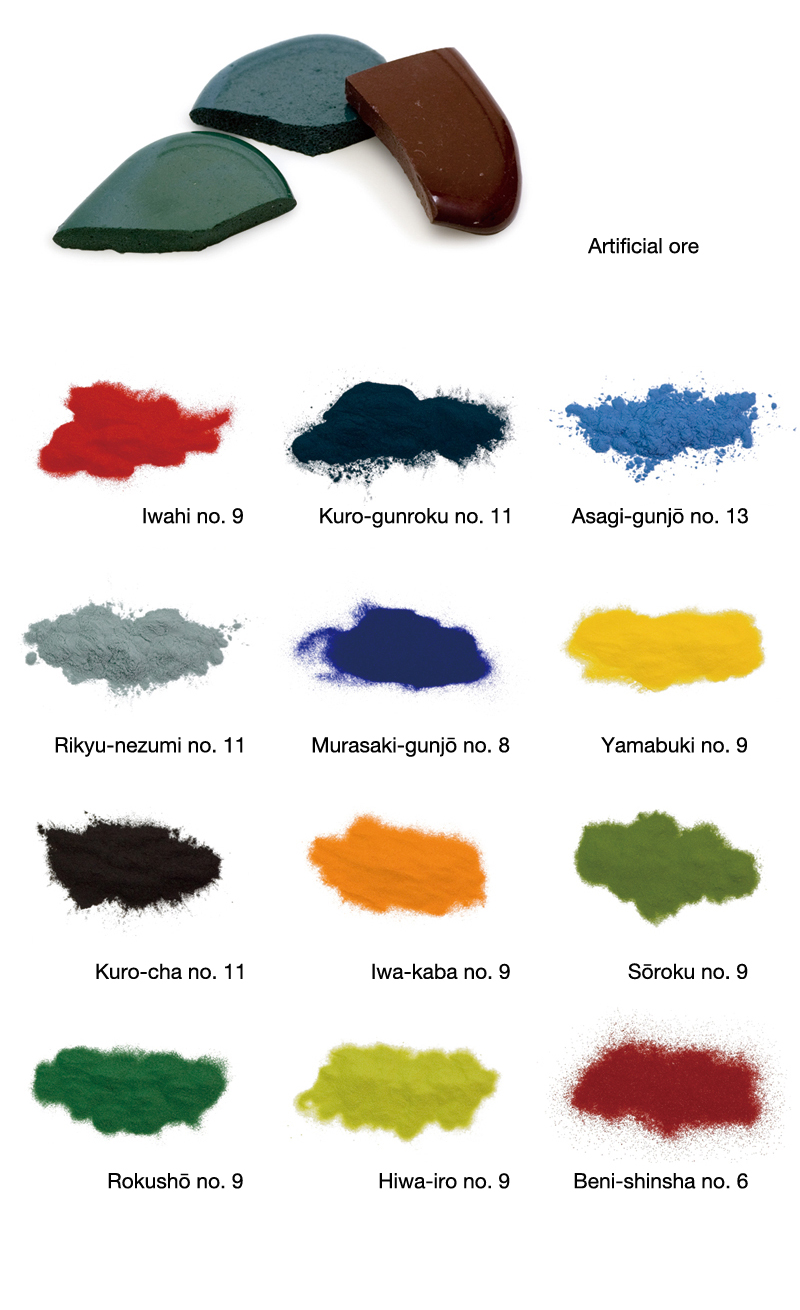
- Synthetic iwa-enogu (materials + paints)
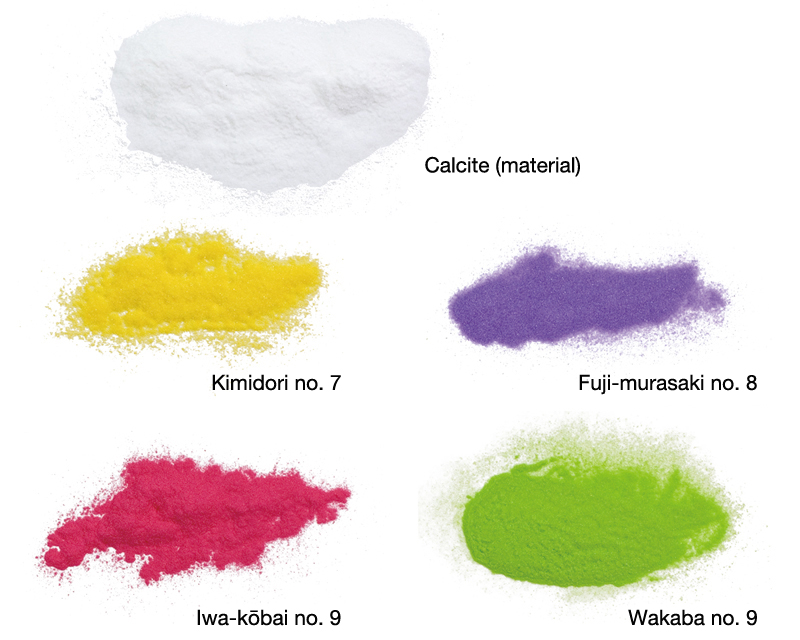
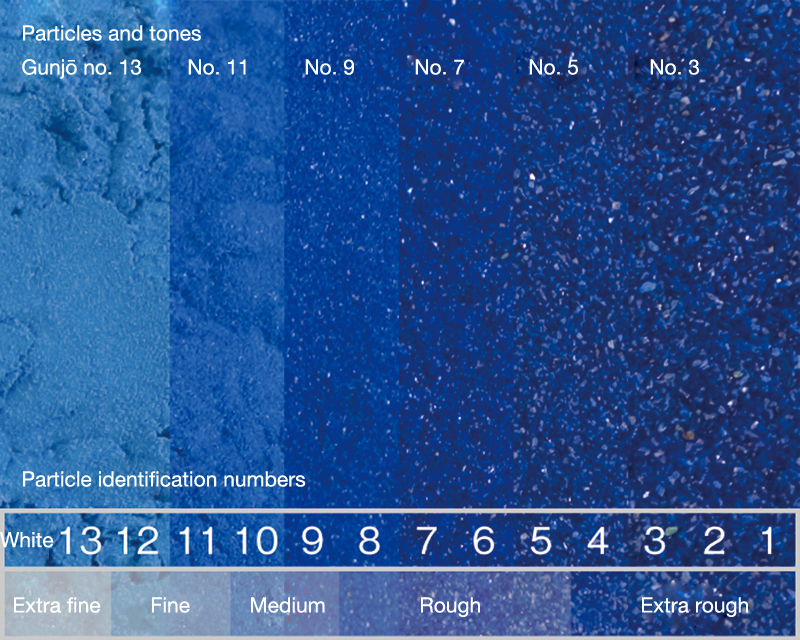 The numbers given here correspond to one type of standardization and may vary by paint store or manufacturer.
The numbers given here correspond to one type of standardization and may vary by paint store or manufacturer.
